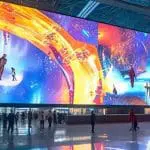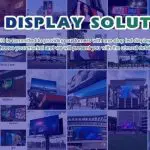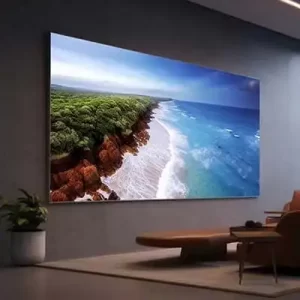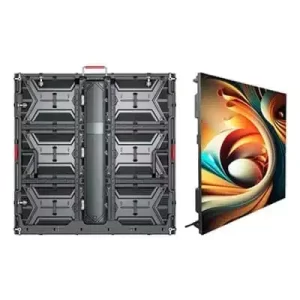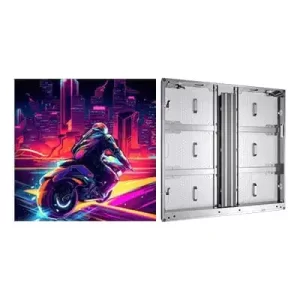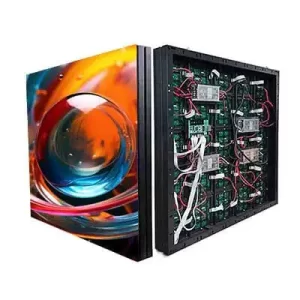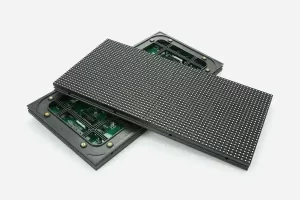In today’s digitally driven world, LED screens have become a cornerstone of modern visual communication. From towering billboards in Times Square to the sleek displays on smartphones, LED technology powers the vibrant, dynamic visuals that capture our attention daily. But what exactly is an LED screen, and how does it work? This article dives into the fundamentals of LED screens, exploring their technology, applications, and advantages while shedding light on why they dominate the display industry.
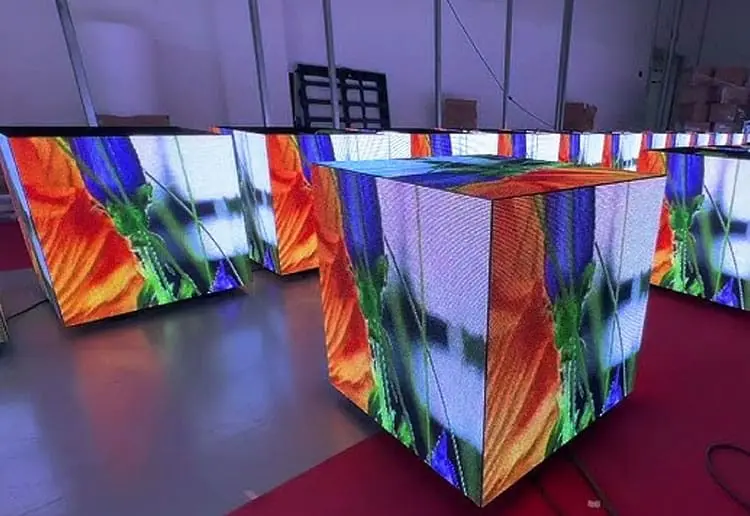
How Does an LED Screen Work?
At its core, an LED (Light-Emitting Diode) screen is a flat-panel display that uses an array of tiny light-emitting diodes to produce images. Unlike traditional displays that rely on backlighting (e.g., LCDs), each LED functions as an independent light source. This allows for precise control over brightness, color, and contrast, resulting in sharper and more vivid visuals.
The Science Behind LEDs
LEDs are semiconductor devices that emit light when an electric current passes through them. The color of the light depends on the materials used in the semiconductor. For example:
-
Red LEDs use aluminum gallium arsenide.
-
Green LEDs rely on gallium phosphide.
-
Blue LEDs are made from indium gallium nitride.
By combining red, green, and blue (RGB) LEDs in clusters, screens can produce millions of colors through additive color mixing. This RGB configuration forms the basis of full-color LED displays.
Pikselavstand og oppløsning
A critical factor in LED screen quality is pikselavstand—the distance between the centers of two adjacent LEDs. Smaller pixel pitches mean higher resolution, as more LEDs are packed into a given area. For instance, screens with a 1mm pitch are ideal for close viewing (e.g., indoor signage), while a 10mm pitch suits large outdoor billboards viewed from afar.
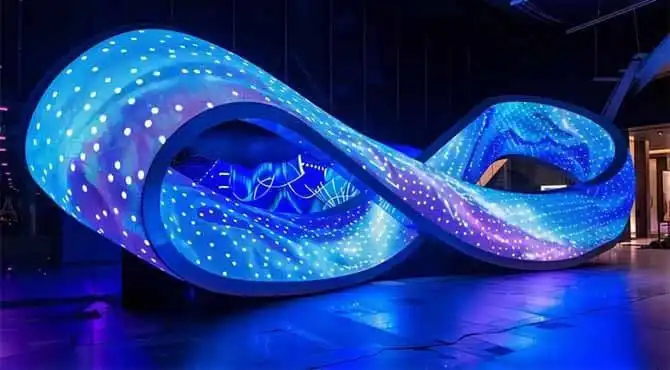
Types of LED Screens
LED screens are categorized based on their application, environment, and technology. Below are the most common types:
Indoor LED Screens
Designed for controlled environments, indoor LED screens prioritize high resolution and color accuracy. They’re widely used in:
-
Retail stores for product promotions.
-
Corporate lobbies for branding.
-
Studios for live broadcasts and virtual sets.
Popular indoor models include SMD (Surface-Mounted Device) LEDs, where red, green, and blue diodes are mounted on a single chip for compactness.
Utendørs LED-skjermer
Built to withstand harsh weather, outdoor LED screens feature high brightness (measured in nits) to remain visible in direct sunlight. Key applications include:
-
Digital billboards along highways.
-
Stadiums for live event coverage.
-
Public transport hubs for real-time updates.
These screens often use DIP (Dual In-Line Package) LEDs, which are larger and more durable than SMD variants.
Flexible and Curved LED Screens
Advancements in LED technology have enabled bendable displays that conform to unconventional shapes. Flexible LED screens are used in:
-
Concave/convex architectural installations.
-
360-degree immersive experiences.
-
Retail window displays with curved designs.
Gjennomsiktige LED-skjermer
These innovative screens allow light to pass through, making them ideal for storefronts or glass partitions. They blend digital content with real-world backgrounds, creating striking augmented reality effects.
Applications of LED Screens
The versatility of LED screens has led to their adoption across industries. Here are some transformative use cases:
Advertising and Marketing
LED billboards and digital signage have revolutionized advertising by enabling real-time content updates and interactive campaigns. Brands leverage motion graphics and animations to engage audiences more effectively than static posters.
Entertainment and Events
Concerts, sports events, and theater productions rely on LED screens for immersive backdrops and live feeds. High refresh rates (120Hz or more) ensure smooth motion during fast-paced action.
Control Rooms and Data Visualization
Industries like aviation, energy, and security use LED-videovegger to monitor complex data streams. The seamless design of tiled LED panels eliminates bezel gaps, providing an uninterrupted view of critical information.
Education and Collaboration
Interactive LED screens are replacing traditional whiteboards in classrooms and boardrooms. Touch-enabled displays allow users to annotate content, share files, and collaborate in real time.
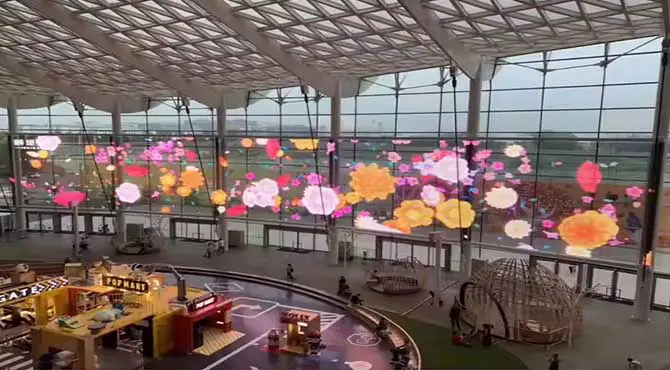
Advantages of LED Screens Over Traditional Displays
Why are LED screens preferred over LCDs, plasmas, or projection systems? Here’s a breakdown of their key benefits:
Superior Brightness and Contrast
LEDs emit their own light, achieving brightness levels exceeding 5,000 nits—far higher than LCDs (300–500 nits). This makes them readable even in brightly lit environments. Additionally, localized dimming in advanced LED displays enhances contrast ratios for deeper blacks.
Energieffektivitet
LEDs consume less power than conventional lighting systems. For example, an LED billboard uses up to 50% less energy than a fluorescent-lit equivalent, reducing operational costs and environmental impact.
Longevity and Durability
LEDs have a lifespan of 100,000 hours (about 11 years of continuous use), outperforming LCDs and plasmas. Their solid-state construction also makes them resistant to vibrations and temperature fluctuations.
Skalerbarhet
LED panels can be tiled together to create screens of virtually any size. This modularity is invaluable for custom installations, such as wraparound displays in arenas or massive video walls in command centers.
Choosing the Right LED Screen: Key Considerations
Selecting an LED screen requires evaluating several factors to match your needs:
Synsavstand
Determine how close the audience will be to the screen. Smaller pixel pitches (e.g., ≤2.5mm) are necessary for close-up viewing, while larger pitches (≥6mm) work for distant viewers.
Ambient Light Conditions
Outdoor screens need high brightness (≥5,000 nits) to combat sunlight, whereas indoor screens typically operate at 800–1,500 nits.
Content Type
Video-heavy content demands high refresh rates and wide color gamuts, while informational displays (e.g., airport schedules) may prioritize reliability over advanced specs.
Budsjett
While LED screens have become more affordable, costs vary widely based on resolution, durability, and features. Balance upfront expenses with long-term ROI from energy savings and reduced maintenance.
The Future of LED Screens
Emerging technologies promise to push LED screens further:
-
MicroLEDs: Ultra-small LEDs (<100μm) enable 8K+ resolutions for consumer TVs and wearables.
-
Transparent OLED Hybrids: Combining OLED’s true blacks with LED’s brightness for next-gen AR displays.
-
AI-Driven Optimization: Smart screens that auto-adjust brightness and content based on audience demographics or environmental conditions.
LED screens are more than just a display technology—they’re a gateway to immersive, impactful communication. By understanding their mechanics, applications, and benefits, businesses and consumers alike can harness their potential to inform, entertain, and inspire. As innovation continues, one thing is certain: the future of visual experiences will shine brighter than ever, powered by LEDs.










